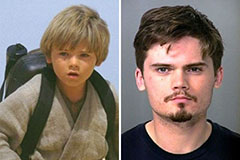Discover the Interesting World of Woodpeckers: Everything You Required to Know
The world of woodpeckers is a world loaded with unique actions, intricate adjustments, and a varied range of types. From their habitats and circulation patterns to their feeding practices and specialized anatomical features, woodpeckers have actually long astounded the rate of interest of ornithologists and nature enthusiasts alike. Comprehending the ins and outs of these fascinating birds gives a glimpse right into the intricate interaction between their biology and the atmosphere. As we discover the globe of woodpeckers additionally, we discover a wealth of information that clarifies their significance in environments and the obstacles they deal with in an ever-changing globe.
Woodpecker Habitats and Circulation
In North America, for instance, woodpeckers can be detected in both coniferous and deciduous woodlands, utilizing their solid beaks to forage for insects and develop nesting dental caries in trees. In Africa, particular woodpecker types have adapted to dry atmospheres, such as the acacia woodlands, where they play an essential role in regulating insect populations.

Feeding Behaviors and Diet Plan
Woodpeckers use their strong beaks to pierce right into the bark of trees, probing for insects and larvae hidden under the surface. In addition to insects, woodpeckers also eat nuts, seeds, fruits, and sap.
Woodpeckers are recognized for their drumming habits, which serves not only to communicate with various other woodpeckers however likewise to locate food. The fast drumming audio is produced by the bird pecking on powerful surfaces like dead trees or metal poles. This actions can bring in pests concealed in the wood, allowing the woodpecker to detect their visibility and feed upon them.
Unique Adjustments for Tree Climbing
In their skilled search of pests concealed within tree bark, woodpeckers have evolved amazing anatomical functions that equip them with one-of-a-kind adjustments for efficient tree climbing. Woodpeckers have strong neck muscles and a distinct view skull framework that absorb the impact of consistent pecking, enabling them to climb up up and down without causing harm to their brains. These adaptations showcase the amazing evolutionary design that enables woodpeckers to navigate trees with precision and performance.
Diverse Woodpecker Variety Worldwide
With over 200 various varieties spread out across different habitats worldwide, the family of Picidae encompasses an amazing diversity of woodpeckers. These birds can be found in woodlands, forests, savannas, and even urban areas, showcasing their flexibility to various atmospheres. From the renowned Northern Flicker in North America to the colorful and evasive Crimson-backed Flameback in Asia, each woodpecker types exhibits unique features in regards to quill, behavior, and environment choice.
Woodpeckers vary considerably in size, with the small Downy Woodpecker gauging around 6-7 inches in length, while the effective Discover More Here Lineated Woodpecker can reach up to 17 inches - Woodpeckers in Florida. Their beaks also can be found in various forms and sizes, showing their feeding behaviors. Some species focus on extracting pests from tree bark, like the Acorn Woodpecker, while others, such as the Black-cheeked Woodpecker, eat fruits and seeds

Preservation Efforts and Challenges
Preservation efforts for woodpecker populaces are important in mitigating the effect of environment loss and various other hazards encountering these varied avian varieties. Woodpeckers encounter numerous challenges to their survival, primarily due to deforestation, urbanization, climate change, and invasive species. To address these concerns, preservation initiatives concentrate on shielding and restoring woodpecker Visit Your URL habitats, carrying out lasting forestry techniques, and increasing understanding regarding the relevance of these birds in ecosystems.
One significant obstacle in woodpecker preservation is the fragmentation of their environments, resulting in isolated populations that are extra susceptible to extinction - Woodpeckers in Florida. Conservationists function to produce wildlife corridors and secured locations that link these fragmented habitats, allowing woodpeckers to relocate between different locations for feeding, reproducing, and sanctuary

Final Thought
Finally, woodpeckers are remarkable birds with distinct adjustments for tree climbing and feeding behaviors. They can be located in varied habitats worldwide, facing conservation obstacles as a result of environment loss and human activities. Recognizing their habitats, diet regimens, and behaviors is important for conservation initiatives to safeguard these essential bird types. More research study and conservation activities are needed to make certain the survival of woodpeckers in the wild.
 Jake Lloyd Then & Now!
Jake Lloyd Then & Now! Ross Bagley Then & Now!
Ross Bagley Then & Now! Alisan Porter Then & Now!
Alisan Porter Then & Now! Hailie Jade Scott Mathers Then & Now!
Hailie Jade Scott Mathers Then & Now! Nicki Minaj Then & Now!
Nicki Minaj Then & Now!